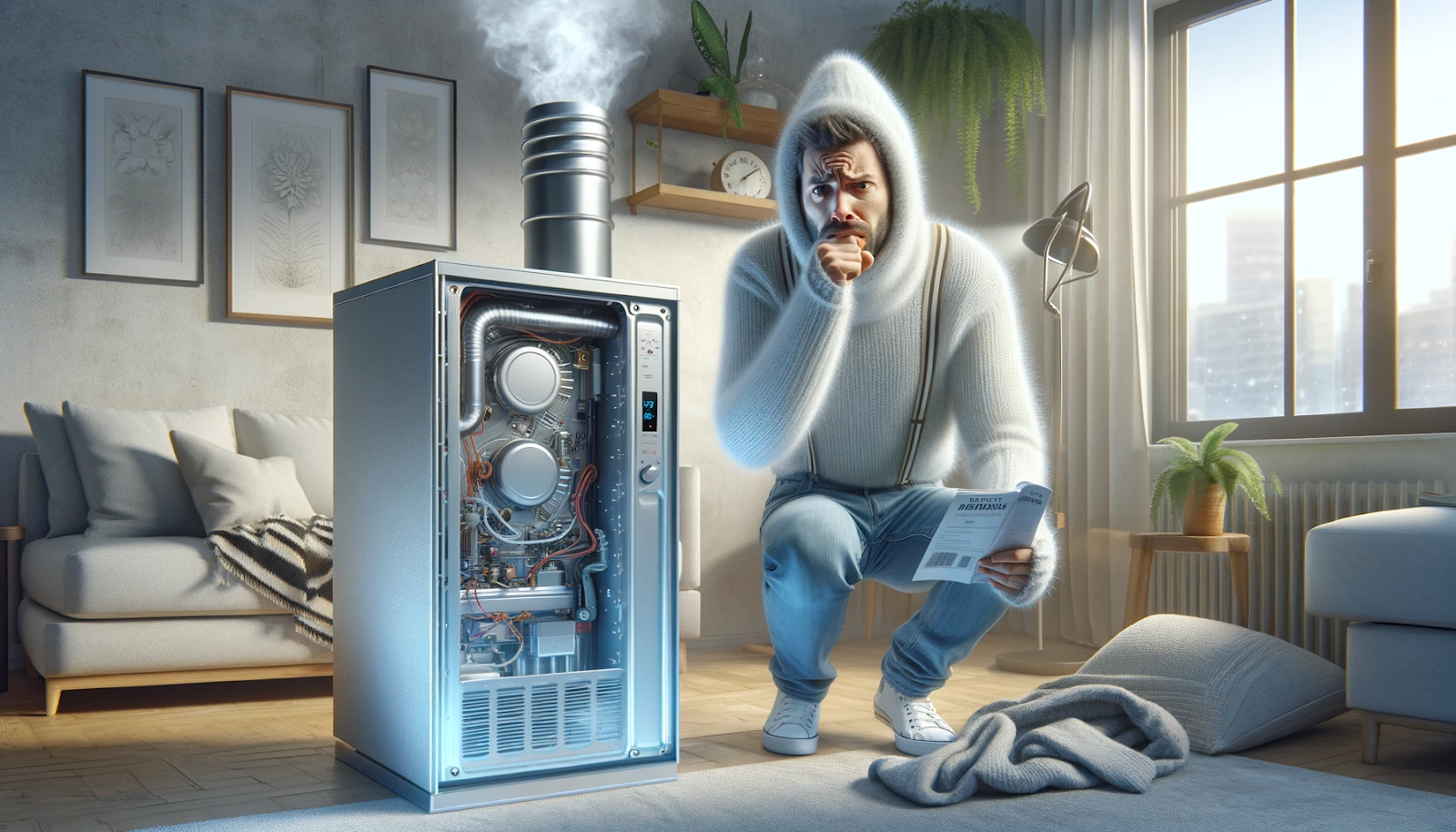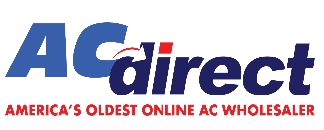Why Is My Electric Furnace Blowing Cold Air
-
 By
Michael Haines
By
Michael Haines
- Jan 31, 2024

As winter deepens, the comfort of a warm home becomes increasingly essential. However, when you expect a wave of warm air from your electric furnace and are instead greeted by a puzzling blast of cold, it's not just discomfort you're facing but a signal that something isn't working as it should.
Understanding why your electric furnace is blowing cold air is critical, not only to restore comfort but also to ensure your home's heating system operates safely and efficiently.
Electric furnaces are a cornerstone of home heating in many regions, known for their efficiency and reliability. Yet, like all household appliances, they can experience issues, with one of the most perplexing being the unexpected release of cold air.
This anomaly can arise from various causes, ranging from simple thermostat missettings to more complex mechanical failures. Recognizing the root causes is the first step in returning your living space to its cozy state.
This guide is designed to navigate you through the common problems that lead to a furnace emitting cold air. We will provide you with a clear pathway to diagnosing and resolving these issues. Moreover, we understand that sometimes repairs might just be a temporary fix for an aging system.
Therefore, we'll also delve into recognizing when it might be more economical and efficient to consider replacing your electric furnace altogether.

Understanding Your Electric Furnace
Electric furnaces are a staple in many homes, providing a reliable and efficient heat source during colder months. At its core, an electric furnace uses a series of heating elements made of metal coils that become hot when an electrical current passes through them.
The heat generated from these elements is then transferred to the air circulating through the furnace, which is subsequently pushed out into your home through ducts and vents.
The process begins with the thermostat, which senses the temperature of your home and signals the furnace to turn on when the indoor temperature drops below the set point. As electricity flows into the furnace, it's directed to the heating elements. These elements are staged in sequences; not all of them turn on at once, which helps in managing energy consumption. Once the elements are heated, the furnace's blower motor kicks in, pulling in cold air from your home, passing it over the hot elements, and then pushing the warmed air back into your living spaces through the ductwork.
Maintaining and operating your electric furnace properly is vital for several reasons. Firstly, regular maintenance ensures that your furnace operates at peak efficiency. Dirty or neglected furnaces must work harder, which consumes more energy and leads to higher utility bills.
Secondly, a well-maintained furnace is less likely to break down, ensuring that you have consistent heat when you need it most. Lastly, regular checks and balances can significantly extend the life of your furnace, allowing you to maximize your investment before needing to consider a replacement.
To maintain your electric furnace, you should regularly replace or clean its air filters, ensure that its thermostat works correctly, and keep the surrounding area clean and free from obstructions. It's also wise to have a professional HVAC technician inspect and service your furnace annually. They can check electrical connections, lubricate moving parts, and address any wear and tear before it leads to a more significant issue.
Understanding how your electric furnace works and recognizing the importance of its maintenance and operation can help ensure a warm, comfortable, and safe environment in your home. It also sets the stage for making informed decisions about its care and, eventually, when and how to replace it, ensuring that you continue to enjoy efficient and reliable heating for years to come.

Common Causes of a Furnace Blowing Cold Air
When your electric furnace is blowing cold air, it's a sign that something's not right. Understanding the root causes can guide you toward the right solution. Here are some of the most common issues you might encounter.
Thermostat Issues
The thermostat is the command center for your heating system, and when it malfunctions, it can lead to your furnace blowing cold air. Incorrect thermostat settings can be a simple oversight, but it can also result from battery problems in non-hardwired systems or from outdated technology in older thermostats.
Ensure your thermostat is set to "heat" and not "cool," and check the temperature settings. If everything seems correct, but problems persist, consider replacing the batteries or upgrading to a newer, more reliable model.
Dirty Filters
Air filters are critical in maintaining airflow and ensuring your furnace operates efficiently. Over time, these filters can become clogged with dust and debris, restricting airflow and putting extra strain on your furnace. This not only leads to diminished heating performance but, in some cases, can cause the system to blow cold air as it struggles to circulate heat. Regularly checking and replacing dirty filters is an easy yet effective way to prevent this issue.
Circuit Breakers and Power Supply
Electric furnaces require a consistent power supply to operate correctly. If your furnace is blowing cold air, check your home's circuit breaker to ensure the furnace's circuit hasn't tripped.
Tripped breakers or unstable power supplies can lead to intermittent or inadequate heating. Reset any tripped breakers and ensure that your furnace is the only major appliance on its circuit to prevent overloads. If problems persist, you may need to consult with an electrician to ensure your home's electrical system can support your furnace's needs.
Blower Issues
The blower motor and fan circulate warm air throughout your home. If there are problems within this system, it can lead to your furnace blowing cold air or not blowing air at all. Common blower issues include motor malfunctions, fan obstructions, or issues with the belts and bearings that support the blower's operations.
Regular maintenance can prevent many of these issues, but if you suspect a blower problem, it's often best to call a professional technician for a thorough inspection and repair.
Heating Element Failures
At the heart of your electric furnace are the heating elements that actually warm the air. Over time, these elements can wear out or fail, leading to a complete lack of heat. In some cases, only some elements fail, reducing heating capacity and lukewarm air.
If you suspect that your furnace's heating elements are to blame for the cold air, it's crucial to contact a professional. Dealing with electrical components can be dangerous, and a certified technician can safely inspect and replace faulty elements.
Each of these issues can significantly impact your furnace's ability to heat your home. By understanding these common causes, you can take proactive steps to prevent or address problems.
Regular maintenance, timely repairs, and knowing when to call a professional can all contribute to a warm, comfortable, and safe home environment. Keep your furnace running efficiently and avoid the chill of unexpected cold air with these insights.

Troubleshooting Steps
Troubleshooting your electric furnace when it's blowing cold air involves several key steps. Understanding and performing these actions can help identify and possibly resolve the issue without needing to call in a professional immediately.
1. Checking and Adjusting the Thermostat:
The first step is to check your thermostat, as it is the control system for your furnace. Ensure it's set to 'heat' and not 'cool' or 'off.' To trigger the heating, the desired temperature should be a few degrees above the room's current temperature.
If it's a programmable thermostat, verify that the settings correspond to your current needs. Batteries in non-wired thermostats should be checked and replaced if needed. If you have recently changed the thermostat or had power issues, recheck the configuration and ensure it's compatible with your furnace type.
2. Cleaning or Replacing Air Filters:
A clogged air filter restricts airflow, significantly reducing the efficiency of your furnace and possibly leading to it blowing cold air. Locate the filter, which is typically found in the return air duct or blower compartment.
Turn off the furnace before removing the filter to examine it. If it's filled with dust and debris, clean it if it's reusable, or replace it with a new one. Remember, regular filter maintenance is crucial, typically every 30-90 days, depending on usage and type.
3. Inspecting Circuit Breakers and Power Supply:
Sometimes, the issue could be as simple as a tripped circuit breaker or a blown fuse. Check your home's electrical panel for any tripped breakers or blown fuses. If you find one, reset or replace it, and then check if the furnace starts to emit warm air.
Additionally, ensure that the furnace's power switch is turned on. It's usually located on or near the furnace and can sometimes be accidentally turned off.
4. Inspecting the Blower Motor and Heating Elements:
The blower motor circulates air throughout your home. If the motor is faulty or there are issues in the belt or fan, it can lead to inadequate heating. Listen for unusual sounds or check for a lack of movement in the blower area. Some systems have an inspection window; use it to check for a blinking light indicating blower motor issues.
As for the heating elements, these can fail over time and may need a visual inspection or a continuity test with a multimeter. However, working with electrical components and heating elements can be dangerous and is often best left to professionals.

Professional Diagnosis and Repair
When your electric furnace starts blowing cold air, it's crucial to recognize when the problem is beyond a simple DIY fix and requires professional attention. Understanding when and why to call a professional HVAC technician can save you time money, and ensure your home remains safe and comfortable.
When to Call a Professional HVAC Technician:
Repeated Issues:
If you've attempted troubleshooting and the problem persists or reoccurs frequently, it's time to call a professional. Continuous issues can indicate deeper, more complex problems within your furnace system.
No Heat Production:
When your furnace fails to produce any heat at all, despite all your efforts to check the usual suspects like the thermostat settings and filters, a professional can diagnose less obvious issues like malfunctioning heating elements or electrical problems.
Unusual Noises or Smells:
Odd sounds, such as banging, whistling, or grinding, or strange smells emanating from the furnace are red flags. These could indicate serious issues like electrical problems, a dying motor, or even a safety hazard.
You're Unsure:
If you're uncertain about any aspect of furnace maintenance or repair, it's better to consult a professional. Guesswork can lead to further damage or potentially dangerous situations.
Why Professional Help is Crucial:
-
Safety: Furnaces involve complex electrical components and potentially dangerous elements like high voltage and heating elements. Trained technicians can safely navigate these hazards.
-
Expertise: HVAC technicians have the training, tools, and experience to diagnose problems quickly and accurately, ensuring repairs are effective and efficient.
-
Warranty Preservation: Many furnace warranties require professional servicing for claims to be valid. DIY repairs might void your warranty.
What to Expect During a Professional Furnace Inspection and Repair:
-
Initial Assessment: The technician will start with a series of questions about the furnace's performance and your recent experiences. This helps them understand the potential issues before physical inspection.
-
Physical Inspection: The technician will inspect various components of your furnace, including the thermostat, filters, blower motor, heating elements, and electrical connections, to identify any issues.
-
Diagnostic Testing: Using specialized tools, technicians may perform tests to pinpoint specific problems, especially if the issue isn't immediately apparent.
-
Discussion of Findings: After the inspection, the technician will explain any issues discovered and discuss the best course of action, whether it's repair or replacement.
-
Repair or Replacement: Based on the discussion, the technician will proceed with the necessary repairs, or in cases where the furnace is beyond repair or not cost-effective to fix, they may recommend replacement.
Professional diagnosis and repair ensure that your furnace not only returns to optimal operation but also operates safely and efficiently. Regular professional maintenance can prevent sudden failures and prolong the life of your furnace, making it a wise investment for any homeowner. If you're facing persistent issues with your electric furnace blowing cold air, consider contacting a trusted HVAC professional to secure your comfort and safety.
The Lifespan of an Electric Furnace
Electric furnaces are known for their durability and longevity, typically serving your home's heating needs for about 15 to 20 years. However, like any appliance, their life expectancy can vary based on maintenance, usage patterns, and initial installation quality.
Recognizing the signs of an aging furnace is crucial in avoiding sudden breakdowns. Some telltale signs include increased heating bills, frequent repairs, uneven heating, and strange noises during operation. If your furnace is over 15 years old and you start noticing these symptoms, it might be nearing the end of its useful life.

Replacement vs. Repair: Making the Smart Choice
When facing issues with an older electric furnace, homeowners are often confronted with the decision to repair or replace it. A thorough cost-benefit analysis is essential in making an informed choice. Consider the age of your furnace: if it's nearing the end of its typical lifespan and repairs are becoming more frequent and costly, replacement might be the more economical and reliable option.
Newer models offer significant advantages, including improved energy efficiency, which can lead to lower utility bills, enhanced performance, and, often, more advanced features that contribute to a comfortable home environment.
At AC Direct, we understand the importance of making the right decision for your home and budget. Our team is dedicated to helping you navigate the complexities of furnace repair and replacement. We offer a wide selection of electric furnaces that cater to different needs and budgets, alongside professional advice to ensure you choose the best option.
With our expert installation services, you can rest assured that your new furnace will operate efficiently and reliably for years to come. Visit our website or contact us today to learn more about how we can assist you in choosing and installing the right furnace for your home.
Conclusion
Understanding and addressing the issue of your electric furnace blowing cold air is essential for maintaining a comfortable, safe, and energy-efficient home. Throughout this guide, we've explored the various causes that could lead to this common problem and provided practical solutions and troubleshooting steps.
It's crucial to regularly monitor your furnace's performance and take prompt action when issues arise. Remember, timely maintenance and repairs not only ensure consistent warmth throughout your home but also extend the lifespan of your furnace.
Making informed decisions about whether to repair or replace your electric furnace can significantly impact your comfort and finances. As your furnace ages, it may become less efficient and more prone to breakdowns. In such cases, investing in a new, energy-efficient model might be the smarter choice in the long run. Before making any decisions, consider the age of your furnace, the frequency and cost of repairs, and the advantages of newer models in terms of performance and energy consumption.
Don't let a cold draft take over your warm home! Visit us at AC Direct for all your furnace needs. Whether you're seeking expert repair services or considering a brand-new electric furnace, our team is ready to provide you with the best solutions tailored to your needs. Explore our extensive range of high-quality, energy-efficient electric furnaces designed to keep your home cozy and comfortable.

 and now, NASCAR Racing Sponsor
and now, NASCAR Racing Sponsor










